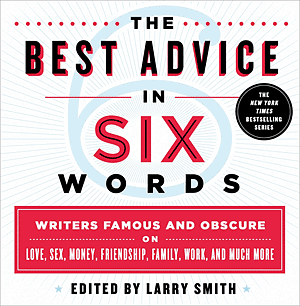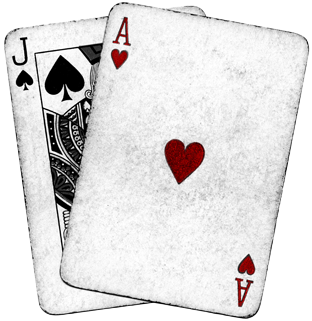It’s been a week since I finished Watchers by Dean Koontz, and have since had a few discussions about it. On a quick Google I pulled up a critical analysis of the piece by Joan G. Kotker, an English Faculty member at Bellevue College, and found it to be a thought-provoking study. I’ve always enjoyed geeking out on exceptional art, taking things deeper into the world of academia. Music, fiction, painting, chess, etc. It’s a healthy way to burn of steam.
Along with a solid analysis of plot, structure, character, and point of view, Kotker offers some spot-on observations with regards to thematic elements found in Watchers. In particular, she identifies the Mickey Mouse device Koontz utilizes as a motif to punctuate the underlying theme of the story, which Kotker describes to be: “Happy childhoods are only a fantasy; they exist only in the world of Mickey Mouse. In the world of reality, no one can make us happy. Instead, we must achieve our own happiness, and we can do this only by caring for one another, by watching over one another.”
Kotker on the Mickey motif as used by Koontz in Watchers:
One specific issue raised by Watchers is the repeated use of Mickey Mouse as a motif. Einstein loves watching Mickey Mouse videos, and requests them for a Christmas present. When Nora and Travis are searching for names for the child they will have, Einstein suggests that it be named Mickey or Minnie.
These scenes with reference to Mickey are at first funny and touching, and then, at the end, very sad. They carry a weight within the work that seems to suggest they are intended as more than a charming detail — that Mickey Mouse represents something fundamental to the novel’s world view — and it is striking that, in fact, Mickey Mouse has something in common with Einstein and The Outsider: all three are creatures created by human beings to serve the needs of human beings.
Perhaps the underlying message here is that human beings are not really meant to manipulate other creatures, that only in the world of fantasy can we be creators of successful alternative lives. Or perhaps, more ominously, the message is that unlike Einstein and The Outsider, human beings are not capable of differentiating between fantasy and reality. As a consequence, we bring great pain and sorrow into the world by continually trying to make our fantasies into realities. In this reading, the irony of Mickey Mouse is that the dog and The Outsider, who love this icon of childhood, are in fact more adult than the humans who have developed them, since they have the maturity to understand fantasy for what it is; by virtue of this understanding, they know that human beings can successfully create other creatures only in the world of fantasy, not in the world of reality.
Yes, yes, YES. Nicely done.










Comments on this entry are closed.
Kotker’s report:
– – – – –
Dean Koontz
Critical Companions to Popular Contemporary Writer
by Joan G. Kotker, English Faculty, Bellevue Community College
Published by Greenwood Publishing
Copyright � 1996 by Joan G. Kotker.
5: Watchers (1987)
Of the many suspense novels that Dean Koontz has written, Watchers is without doubt one of the most beloved by readers. Nearly every fan of Koontz lists it as a favorite, and Koontz himself says of it, “It was a difficult book to write but I was never for a moment in despair or consumed by doubt. I knew the story and the characters worked, scene by scene, and that I had my hands on special material. From first page to last, writing that book was a transcendent, joyous, indescribable experience. Floods of blood and sweat, you understand, but unremitting joy, as well. . . .The story came like a great wide river, flowing smooth and swift, and for the whole ride I knew I was going somewhere special” (Gorman interview, 46-47). The novel is exceptionally well structured, with all the component parts coming together in a unified whole. This is no small achievement in a work of almost 500 pages.
GENRE
Like nearly all of Dean Koontz’s later novels, Watchers is a cross-genre book that uses conventions from several genres. It fits best in the suspense category, a broad category covering works that include elements of many different genres. This category has as a defining characteristic the fact that “the characters and the reader are in a constant state of uneasy anticipation of the worst, which all too often happens” (Rosenberg and Herald 1991, 47). Watchers has within it elements of the science fiction genre of hard science in the genetic engineering that brings about the monster, The Outsider. It is also a love story in the developing relationship between the protagonists, a technothriller in its careful descriptions of weapons and security measures, a police procedural in the accurate descriptions of the way in which the NSA agents work, a gangster story in the person of the hitman Vince Nasco, and overriding all of this, an inspiring dog story whose suspense is based on a series of threats to a very special dog.
PLOT DEVELOPMENT
In Watchers, the original situation is that the hero or protagonist, Travis Cornell, is in despair, living a life that feels pointless and without meaning.” Everyone close to him has died. His mother died in childbirth; when he was ten years old, his beloved older brother drowned in an accident that he witnessed; when he was fourteen, his father was killed in an automobile accident; as an adult he went into the Special Forces, and the nine other members of his ten-member team were killed; and after he returned to civilian life, his wife of ten months died of cancer. He has come to believe that he is a jinx, that everyone he may ever love is doomed to die. When the novel opens, Travis has gone hunting rattlesnakes in the Santa Ana foothills of California, attempting to recover one of the pleasures of his childhood.
In Watchers the initial complication Travis must face is the appearance of a golden retriever who will not let him go deeper into the forest. Although it is very friendly to him, the dog turns hostile and bars Travis’s way when he tries to penetrate the woods. Eventually he realizes that the dog is warning him of unknown danger ahead (a danger that Koontz emphasizes by having the forest become unnaturally still, with all its creatures silent, waiting, and watching). Travis leaves the forest with the retriever, and this begins a whole series of further complications. First Travis learns that the retriever is exceptionally intelligent, and that he has escaped from Banodyne, a DNA research facility where he was bred to have the physical characteristics and personality of a dog combined with an almost human level of intelligence. Also escaped from the same laboratory is The Outsider, another genetically engineered super-intelligent animal. But unlike the dog (whom Travis names Einstein in recognition of his intellectual abilities), The Outsider has been bred to be a killer. He hates the dog, and is the danger that was waiting in the Santa Ana foothills: he is intent on finding and killing Einstein.
The escape of the two super-animals brings in the National Security Agency (NSA), a government intelligence agency whose task is to recover them at once, since they are the product of a top-secret defense project. At the same time the Soviets have learned of the project and are in the process of destroying all information concerning it. They burn down the part of the lab holding records and files of the experiments, and hire a hitman to kill every scientist with direct information about the project. This hitman, Vince Nasco, a contract killer with Mafia connections, becomes curious about why he is killing scientists and interrogates his last victims, learning about the Banodyne project and in particular, about the dog, Einstein. Nasco determines to capture the dog for himself and then ransom it to the highest bidder. Thus, poor Einstein now has The Outsider, the NSA, and a contract killer searching for him and only Travis protecting him, but Travis has a good deal to offer in the role of protector: he is an ex-Special Forces soldier, with the weapons, surveillance, and survival training that go with that role. He loves Einstein, and after the long series of deaths in his life, he desperately needs to have something he loves survive and flourish.
While all of this is going on, Einstein meets Nora Devon, a thirty-year-old orphaned recluse, in a park where Travis has taken him. Einstein and Nora immediately bond. Subsequently he saves her from a rapist (he is a great dog) and Nora and Travis fall in love. The three become a family, intent on staying together and keeping Einstein from being captured and returned to the lab, and much clever, well-constructed escaping of various traps follows.
In the climax, Nora is kidnapped by the contract killer, the contract killer is killed by Travis, Einstein is killed by The Outsider, and The Outsider is killed by Travis.
Finally, in the denouement the reader learns that Einstein is still alive-that he was not killed but only badly wounded by The Outsider. One of the NSA agents knows this, but he too has fallen under Einstein’s spell and files a report listing the dog as dead and the case is closed. Nora, Travis, and Einstein can now live happily ever after.
CHARACTER DEVELOPMENT
Even though it is meticulously plotted and depends heavily on linear development from one incident to the next, Watchers is also rich in character, with even minor figures given personality and substance. The major protagonist of the novel is Travis Cornell, a round (fully developed) character since we have so much information on his background and state of mind. Specifically, we know of his despair and its causes, and we know of the skills he has that qualify him to be Einstein’s rescuer. He is also a dynamic character, since he changes over the course of the novel, beginning as someone who has denied himself all close social contact and ending as someone committed to others.
In addition to Travis, Watchers has two other protagonists: Nora Devon and the dog Einstein. Nora is somewhat of a flat (one-dimensional) character in that we are given a simplistic background for her to explain her reclusiveness; however, she is also a dynamic character, since she changes over the course of the novel, developing into a social person who is giving to others and capable of rich interpersonal relationships. And because she is a central agent in her own development, she goes from being a passive to an active character.
The third protagonist, the dog Einstein, can certainly be described as a well-rounded character, since we know a great deal about his background; however, he is a static character since he does not change during the course of the novel, beginning and ending as a genius dog.
One other positive character who, despite a small role, is drawn as round and dynamic is the NSA agent Lemuel Johnson. Initially he is an antagonist, out to capture Einstein and return him to the lab. Johnson’s background as the success-driven son of a successful African-American businessman is well described, making the reader afraid that he will indeed succeed in capturing Einstein, since he is an exceptionally good agent who cannot tolerate failure. And he is also a dynamic character since, by the novel’s end, he no longer accepts his father’s standards and has resigned from the NSA, having filed a report he knows to be false to protect the dog and leave it in peace. He has moved from an antagonist to a protagonist, and never again will he be driven by the need to succeed in someone else’s eyes. It is significant that each of these positive human characters is dynamic. In this way, Koontz demonstrates the special quality of Einstein, because it is association with Einstein that becomes the catalyst for each person’s change. Only Einstein is static, and he is a character who has no need of change: he is wonderful as he is.
Vince Nasco, the primary human antagonist in Watchers, is a flat character, since almost the only information we have about him is that he thoroughly enjoys his work as a contract killer and thinks “how lucky he was to have found a way to make murder his business, to be paid for what he would have done anyway” (50). He believes that each killing he does increases his own longevity, since he is convinced that his victims’ life essences pass to him at the moment of their deaths, giving him many lives to live. He’s not sure if he has yet reached immortality, but he knows he must be close. At the end of the novel he ends up dead, believing even in the last moment before his death that some mistake has been made-he wasn’t supposed to be mortal. Thus, he is a static character; from the beginning to the end, no change takes place in his character or in his perception of reality.
In the same way that the protagonist Travis Cornell has a nonhuman coprotagonist in the dog Einstein, the antagonist Vince Nasco is paired with a nonhuman antagonist, The Outsider. If it is not human, it is also not quite animal, since Koontz always refers to The Outsider as “it.” Nasco and The Outsider seek the same goal-the capture of the dog-although each is unaware of the other. Unlike Nasco, The Outsider is a round character, however. We know of its genesis as a genetically programmed creature at Banodyne. We know of its loathing for itself because it is aware of how extraordinarily ugly it is. We see the terrible loneliness of The Outsider. Finally, we know of its hatred for the dog, who, although he too is genetically engineered, is normal in his appearance and so is not doomed to a lonely life as an outsider. The complex character of The Outsider is developed through a very moving scene describing its lair in the forest: “Apparently, The Outsider had stolen. . .packs of candy somewhere along the way. The strange thing was that the wrappers were not crumpled but were smoothed out and laid flat on the floor along the back wall. . . .Perhaps The Outsider liked the bright colors of the wrappers. Or perhaps it kept them to remind itself of the pleasure that the candy had given it because, once those treats were gone, there was not much other pleasure to be had in the hard life to which it had been driven” (264).
The Outsider has survived by eating wild animals, but it has hidden the bones of these animals way in back in its cave and has arranged for itself a display of colorful, shining objects. NSA agent Lem Johnson, on seeing this, thinks that perhaps despite The Outsider’s profound otherness, it can appreciate beauty and has “a desire to live not as an animal but as a thinking being in an ambience at least lightly touched by civilization” (265). As a troubled monster, The Outsider is part of a long line of troubled monsters beginning with Mary Shelley’s Frankenstein, and we respond to it with great pity as well as with great fear. At the novel’s end, there is some indication that The Outsider may be a dynamic character, since ultimately it does not kill Einstein but only severely wounds him. Travis speculates that in these final moments, The Outsider may have found mercy in itself and, in doing so, may have recognized the remote possibility of fellowship with other living beings: “Seeing itself as like others, perhaps it could not kill Einstein” (482).
Another indication of the care that Koontz has taken with characters in Watchers is his treatment of minor figures whose appearance in the novel is momentary and who therefore might reasonably have been drawn as stock figures only. Instead, even these are given defining characteristics that individualize them. A good example of such a single-purpose character is Johnny “The Wire” Santini, a Mafia member who lives in a huge Art Deco beach house in San Clemente. He takes up a total of only 7 pages in a 483-page novel, and since he shares these with two other characters, he doesn’t even have the 7 pages to himself, yet Koontz has taken the trouble to tell the reader what sort of house Johnny lives in. Koontz then goes on to make use of this setting by describing what it shows of The Wire’s character: “he liked Art Deco because it reminded him of the Roaring Twenties, and he liked the twenties because that was the romantic era of legendary gangsters.” He sees himself as part of a great romantic tradition, “mystical kin to Jesse James, Dillinger, Al Capone, the Dalton boys, Lucky Luciano” (149).
The Wire has been in the mob all his life, and over the years has grown somewhat jaded, so with the advent of computers, Johnny has become the mob’s top computer hacker. “If you wanted to run a major credit-card scam, charging a million bucks worth of purchases to other people’s American Express accounts, Johnny The Wire could suck some suitable names and credit histories out of TRW’s files and matching card numbers from American Express’s data banks, and you were in business” (152). We learn all of this in the single visit that Vince Nasco makes to Johnny to have him search files for Travis and Nora’s new identities. Running the search is Johnny’s only function in the novel, and there is no plot necessity for the detailed information given about him. It is clear that Koontz has included the additional information because he is having fun with the character of Johnny The Wire, and so too does the reader. Small scenes such as these continually appear in the novel, adding subtly to its overall suspense and, in the process, giving this very long work freshness and variety.
SETTING
Dean Koontz is usually very traditional in his use of setting, placing it primarily as a backdrop for the action rather than as a motivating force. In Watchers, a memorable natural setting is The Outsider’s lair, and the contrast of this natural den with the man-made items found within it-candy wrappers and decorative objects-shows the complexity of The Outsider, a creature who is more than animal and less than human. Natural setting is also used to herald the coming of death, as in the torrential rainstorm that precedes the novel’s climax.
Throughout Watchers, Koontz also makes strong use of artificial setting as a device to show character. There is a fine scene in San Francisco’s Tenderloin district, an area of bars and strip clubs, seen from the point of view of Nora Devon, who has never been out of suburban Santa Barbara. Nora enables us to see the sleaziness of the area through innocent eyes reacting in wonder-she has no context for comprehending a place like this, and her reaction to it emphasizes both its corruption and her own extraordinarily sheltered life. Koontz effectively marks Nora’s character change from a reclusive person to someone becoming attached to Travis and Einstein by having her shed the drab dresses she wears at the beginning of the novel for colorful shorts and halters. Homes are used to represent the type of people who live in them, from Johnny The Wire’s Art Deco mansion to the casual, comfortable home of a veterinarian who turns out to be a casual, comfortable man, and yet another champion of Einstein.
POINT OF VIEW
Dean Koontz’s point of view of choice seems to be third-person omniscient, in which an unknown narrator who can see into the minds of all the characters tells the story and includes the thoughts of many people. In Watchers, this point of view allows the reader to know how Vince Nasco feels about killing, something he tells no one. It allows us to see how very reclusive Nora is, something she could not tell us because of her very reclusiveness. It makes us aware of the ambivalence that Lem Johnson feels toward his job, something he only gradually comes to realize himself. And most of all, this point of view shows us what an extraordinary dog Einstein is because through it, Koontz can show the reactions of everyone who comes into contact with him. We never see into the mind of Einstein, though, and this is as it should be: it is Einstein’s affect on others that is at the heart of the novel and that, ultimately, the reader too comes to experience. Few people leave this book without having been touched in some way by Einstein.
THEMATIC ISSUES
One specific issue raised by Watchers is the repeated use of Mickey Mouse as a motif. Einstein loves watching Mickey Mouse videos, and requests them for a Christmas present. When Nora and Travis are searching for names for the child they will have, Einstein suggests that it be named Mickey or Minnie. Einstein’s own first litter of puppies is christened Mickey, Donald, Daisy, Huey, Dewey, and Louie. The Outsider is also entranced by Mickey. When Lem Johnson find its lair, he sees on the shelf of special objects that The Outsider has collected a Mickey Mouse coin bank, and he is reminded of one of the lab experiments run at Banodyne to determine Einstein and The Outsider’s ability to distinguish between fantasy and reality. A videotape of film clips of everything from documentaries to Star Wars to Mickey Mouse cartoons was shown to them, and both learned to distinguish fantasy from reality, but “the one fantasy they most wanted to believe in, the fantasy they clung to the longest, was Mickey Mouse. They were enthralled by Mickey’s adventures with his cartoon friends” (265-66). And when The Outsider is severely wounded, waiting to die, it is holding a Mickey Mouse video that it has taken from Einstein. Almost its last words are “Mickey,” and then it asks Travis to kill it-something Travis does as a final mercy to a creature that should never have been born.
These scenes with reference to Mickey are at first funny and touching, and then, at the end, very sad. They carry a weight within the work that seems to suggest they are intended as more than a charming detail-that Mickey Mouse represents something fundamental to the novel’s worldview-and it is striking that, in fact, Mickey Mouse has something in common with Einstein and The Outsider: all three are creatures created by human beings to serve the needs of human beings.
Mickey is, of course, a fantasy who does not even bear much resemblance to a real mouse. Einstein appears to be a golden retriever, but really is a genetically engineered animal who only looks like the rest of his breed. And The Outsider, although initially bred from a baboon, is intended to be hideous, to look like no other living creature. Designed to accompany men into battle, it has been engineered to be doubly effective as a weapon, since its monstrous appearance will create terror in those it hunts and kills.
We are given three types of pseudo-animal: one a fantasy, one who can survive only by disguising his true nature, and one who cannot survive because of its true nature. Only one of these man-made animals is a success in its own right, and that is the fantasy animal-the mouse who has brought delight to children all over the world. Perhaps the underlying message here is that human beings are not really meant to manipulate other creatures, that only in the world of fantasy can we be creators of successful alternative lives. Or perhaps, more ominously, the message is that unlike Einstein and The Outsider, human beings are not capable of differentiating between fantasy and reality. As a consequence, we bring great pain and sorrow into the world by continually trying to make our fantasies into realities. In this reading, the irony of Mickey Mouse is that the dog and The Outsider, who love this icon of childhood, are in fact more adult than the humans who have developed them, since they have the maturity to understand fantasy for what it is; by virtue of this understanding, they know that human beings can successfully create other creatures only in the world of fantasy, not in the world of reality.
The underlying theme of Watchers is that happy childhoods are only a fantasy; they exist only in the world of Mickey Mouse. In the world of reality, no one can make us happy. Instead, we must achieve our own happiness, and we can do this only by caring for one another, by watching over one another. When reading the novel, the reader is struck over and over again by images of a childhood that cannot be recaptured, and that was in fact flawed to begin with. The novel opens with a scene of Travis attempting to recapture a pleasure from his childhood-the shooting of rattlesnakes-but he cannot do so; when he finds a rattlesnake, he cannot pull the trigger. And he has taken with him on his journey the food of childhood-Oreo cookies and Kool-Aid-but only the cookies taste good to him; the Kool-Aid is far too sweet. On examination, perhaps it is as well that he cannot go back to his childhood since, with all its deaths, it held far more pain than pleasure. Surely this is a flawed childhood; every child should have a family and no child should have to endure repeated deaths.
Nora too has an aberrant background, one in which she has been frozen in an artificial childhood. Raised by an embittered aunt, she has been kept at home all of her life, isolated on the pretense that she is too sickly to attend school and must be educated at home, where the aunt can keep her in perpetual childhood. This is a flawed childhood also, one based on the dishonest manipulation of a child by the adult responsible for her. Einstein and The Outsider are also in a sense children, in their case of the scientists who have developed them and who intend, like Nora’s aunt, to keep them in a state of perpetual childhood-that is, perpetually under their control-in laboratory cages.
Each of these characters achieves self-realization by setting aside the constraints imposed by such childhoods. Travis decides not to accept the pattern that loving someone means the death of that person, Nora decides not to accept the message that safety lies in reclusiveness, Einstein and The Outsider decide to escape the lab and take their chances in a world where they will always be other. In doing so, each arrives at self-realization and peace of a sort. Travis and Nora fall in love and create a family, Einstein combines satisfactorily the world of dog and the world of super dog, and The Outsider achieves its own death, with the strong possibility that it has overcome its biological limitations by developing a quality of mercy and even humaneness that it was supposedly bred to be incapable of developing.
Thus, all of these characters have achieved successful resolutions to their lives despite the childhoods they have endured. Nora tells Einstein that we all have the duty to help one another arrive at such resolution, that “we are watchers, all of us, watchers guarding against the darkness” (419) and the gift that we have to offer one another is that of love. This is the message that Einstein has brought to everyone he has had contact with, and it has changed them all, helping them free themselves from the harms of childhood.
ALTERNATIVE READING: THE WRITER’S TECHNIQUES
One of the delights of analyzing fiction is that doing so can help the reader understand how the magician has performed the trick, how an author has gone about creating a work that has unity and is a pleasing whole. In literary analysis, the term unity refers to a work having “some organizing principle to which all its parts are related. . . .A work with unity is cohesive in its parts, complete, self-contained and integrated” (Holman and Harmon 1992, 489). The critic M. H. Abrams (1971) expands on this definition, seeing a work as an artistic whole when all of the plot elements are directed toward an intended effect and none of them can be omitted without seriously imbalancing the whole. The concept of unity originates with Aristotle’s discussion of unity of action, by which he means a story plotted in such a way that everything in the work contributes to its resolution; there are no loose ends, no paths that lead to blank walls. In popular literature, some of the best examples of unity are found in mystery and detective fiction, especially in the Golden Age (1920-1930s) novels of authors like Agatha Christie. In a work such as The Murder of Roger Ackroyd, Christie develops a story in which everything, from physical items to visits by outsiders, contributes to the solution of the murder and at the conclusion readers are left with no unexplained clues or unanswered questions.
As a general rule, it is relatively easy to achieve unity in a work that focuses on one story line, but progressively more difficult to do so as other story lines are introduced. In this case, the writer must juggle all the subplots so that by novel’s end, all are resolved. Characters must be balanced so that when the novel closes, everyone’s fate is known. Readers must be given markers for connecting the many different threads of the novel, so that they are always aware of where they are in the story, of what is happening to whom, and of why it is significant. Often, one element or another of this mix is overlooked so that the reader ends the work unclear as to what has happened to X or what is the final outcome of Y. But in Watchers, Koontz performs a fine juggling act, one that he maintains for 483 pages. He does this by centering all plot strands, characters, settings, and the theme itself on one issue-the hunt for Einstein. This hunt serves the same function as the hunt for the killer in The Murder of Roger Ackroyd. Each of the many subplots in Watchers is in some way focused on Einstein: Travis’s state of mind is the rationale for his first meeting with Einstein; the rapist’s attack on Nora is the rationale for her first meeting with Einstein; the victims of the contract killer have been selected because of their work in developing Einstein; The Outsider is defined by his relationship to Einstein; the high-tech world of computer hacking creates false identities so that Nora and Travis can hide Einstein. Each of the settings in California-the Santa Ana Mountains, San Francisco, Big Sur, the Pacific Ocean, the countryside near Carmel-is in some way integral to the task of keeping Einstein out of the laboratory. And the NSA, the government agency charged with tracking Einstein down, is prevented from doing so by one of its own agents because of his need to protect Einstein.
There are a number of patterns and themes in Watchers that appear in other Dean Koontz novels. Killers who kill for the joy of it and who have very high metabolisms, along with dainty consideration for what is hygienic and socially correct, appear in many of his works (see Mr. Murder, 1993). Computer hacking is becoming a staple for him (see Midnight, 1989). Women who take responsibility for their own fates are frequent characters (see Whispers, 1980). Much detail on guns and security systems, all of it carefully researched, is an almost expected aspect of a Dean Koontz novel. The sense that society as a whole is dangerous and that the individual can survive only by finding an isolated spot is common (see Mr. Murder, 1993). Federal agencies that blindly follow rules and regulations without regard to their impact on the individual is a frequent theme (see Strangers, 1986). Lonely childhoods in which the caretakers act with little care appear in many works (see Cold Fire, 1991). Genetic engineering, biological mutations, and extrasensory perception all play roles (see Bad Place, 1990). In fact, even the love of Disney characters appears in works besides Watchers (see Dragon Tears, 1993).
What is unique about Watchers, though, is the seamlessness with which its many elements fit into a unified whole. At the conclusion of the novel, all the plot lines are resolved, and readers’ expectations are fully satisfied. Evil has, at least temporarily, been contained with the deaths of the scientists responsible for Einstein and The Outsider, the destruction of all records outlining the means by which they were created, the death of the contract killer and The Outsider, the closing of the file on the government search for Einstein, and the successful new life established by Nora, Travis, and Einstein.
This is a very optimistic ending. It reinforces the theme that by watching out for one another, by being responsible for ourselves and for each other, it is possible to achieve a good life. There is a great sense of peace in the novel’s closing scene, when Einstein asks Nora if his pups will remember him and she answers, “As long as there are dogs and as long as there are people fit to walk with them, they will all remember you” (483). Koontz’s achievement in this work is such that we might reword the ending to say that as long as there are Dean Koontz readers, a dog named Einstein will be remembered.